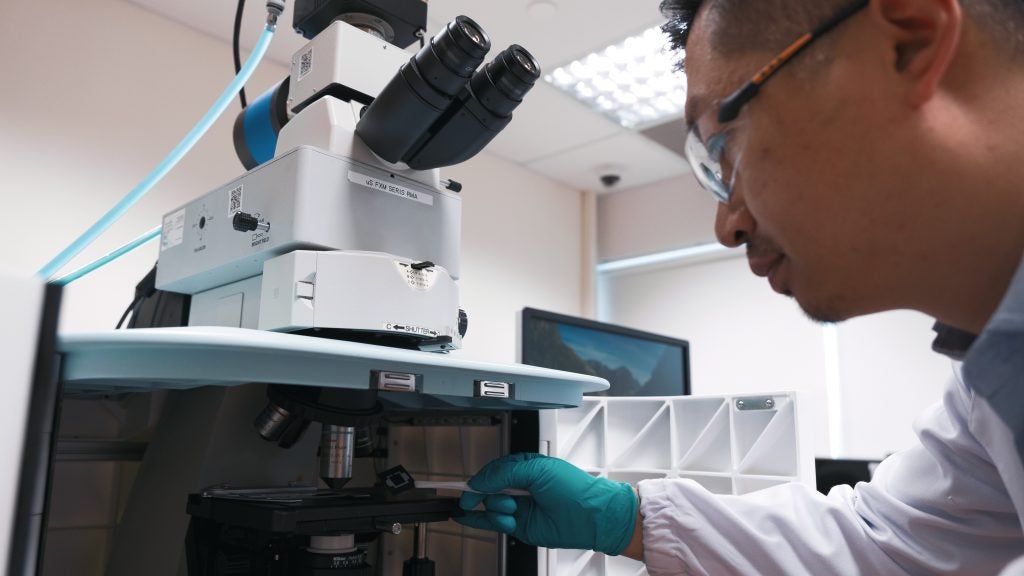The recent landing of NASA's Perseverance rover on Mars has refocused attention on when humans might follow in its path and set foot on the red planet.
Mars is Earth's closest planetary neighbour, but even at the phenomenal speeds of spaceflight - more than 11km a second - a round trip journey is expected last at least two years, and possibly far longer.
For astronauts heading to Mars, food will be a major concern. Packing enough to eat to last the trip is impractical, so food will have to be grown in self-sustaining micro-farms.
With that challenge in mind, researchers planning future manned Mars missions recently took an interest in an advanced hydrogel, developed at NUS, as a possible way of supporting and maintaining such farms.
![1-PIA24428-High-Resolution_Still_Image_of_Perseverances_Landing The landing of the Perseverance rover on Mars on February 18, 2021. [NASA photo]](https://cde.nus.edu.sg/wp-content/uploads/2021/04/1-PIA24428-High-Resolution_Still_Image_of_Perseverances_Landing.png)
Hydrogels are compound materials capable of absorbing and holding large amounts of water. However, certain advanced hydrogels have an additional capability to absorb moisture from the air, store it, and release it in controlled ways.
Asst Prof Tan Swee Ching (NUS Materials Science & Engineering) initially became interested in using hydrogels as an energy-efficient way to control temperature by regulating humidity. Returning to Singapore after several years living in the US he wanted to find ways of cooling Singapore's often sweltering tropical temperatures without resorting to power hungry air-conditioning.
The hydrogels he has developed in his lab at NUS use metal salts as their base and are able to absorb around three or four times their weight in water.
"The first generation of hydrogel that we developed used zinc," said Tan. "But that produced a very watery gel the more moisture it absorbed. So we looked for others using copper, cobalt and other materials, to see which has better absorption rate, and which is easier to handle because gels with higher viscosity are easier to work with."
Smart farms
As he studied the properties of these hydrogels it became clear that their ability to regulate humidity could be applied in so-called smart farms, to grow crops in areas affected by water and food scarcity.

In early 2020 Tan and his team designed a prototype smart farm about the size of a home fish tank to demonstrate the use of the hydrogel in crop cultivation.
Operating as an autonomous, closed loop system, the gel absorbs atmospheric moisture inside the smart farm during the night and then releases the harvested water during the day in a sustainable process powered by solar energy. This way the optimum humidity levels are maintained in the farm, allowing the crops to grow quickly and healthily.
The findings from the smart farm were published in a paper in mid-2020, drawing the attention of Benjamin Greaves, a US researcher who had studied crop growth in microgravity conditions and had worked with the US space agency NASA on developing greenhouses for space missions.
At the time Greaves was preparing to join a crew at the HI-SEAS Mars simulation facility in Hawaii, to test out ways of growing food on future space missions.
Mars testbed
Located about 2,500 metres above sea level on the lava fields of the Mauna Loa volcano, HI-SEAS has been used in a series of NASA-funded projects as a testbed for trailing systems and procedures that could be used for manned missions to Mars.
![Screenshot-2021-04-09-at-3.43.03-PM The HI-SEAS simulation facility is located high up on the lava fields of Hawaii’s Mauna Loa volcano [Photo: University of Hawaii]](https://cde.nus.edu.sg/wp-content/uploads/2021/04/Screenshot-2021-04-09-at-3.43.03-PM.png)
Before travelling to Hawaii, Greaves contacted Tan's lab at NUS, who agreed to share samples of the hydrogel for use at the HI-SEAS facility to grow crops of nutritious microgreens.
During the HI-SEAS missions, operated by the International Moonbase Alliance, crews live in isolation to simulate an actual space mission. For example, messages between the base and the world are subjected to a time delay to mimic how a real astronaut base on Mars, millions of kilometers from Earth, would operate.
Working in the base's lab, Greaves used the NUS hydrogel in small experimental greenhouses to grow and sustain crops of microgreen sunflower plants and upland cress.
"These are perfect for space exploration, because we have a very limited amount of space to grow plants up there, but these microgreens are still packed with nutrients, vitamins and minerals," Greaves said in an interview conducted via Zoom.
![Day-13-Microgreens-2048x1536 Microgreens grown by Benjamin Greaves using the samples of the NUS hydrogel [Photo: Benjamin Greaves]](https://cde.nus.edu.sg/wp-content/uploads/2021/04/Day-13-Microgreens-2048x1536-1.jpg)
For the crew on Greaves' mission, the hydrogel-cultivated plants provided a welcome fresh supplement to the freeze-dried food supplied for the bulk of the mission.
But there was also the critical question how would plants grown under these conditions actually taste?
"They were delicious!" said Greaves, adding that his fellow crew members described them as "a little peppery, but with a good mouthfeel".
The HI-SEAS experiments showed that advanced hydrogels developed at NUS offer a potential low cost, low weight and low energy solution to growing crops in self-sustaining farms.
NASA currently has a target of sending astronauts to Mars by the year 2030. So one day in the not-too-distant future such hydrogels could help feed and sustain the first humans to walk on Mars.





